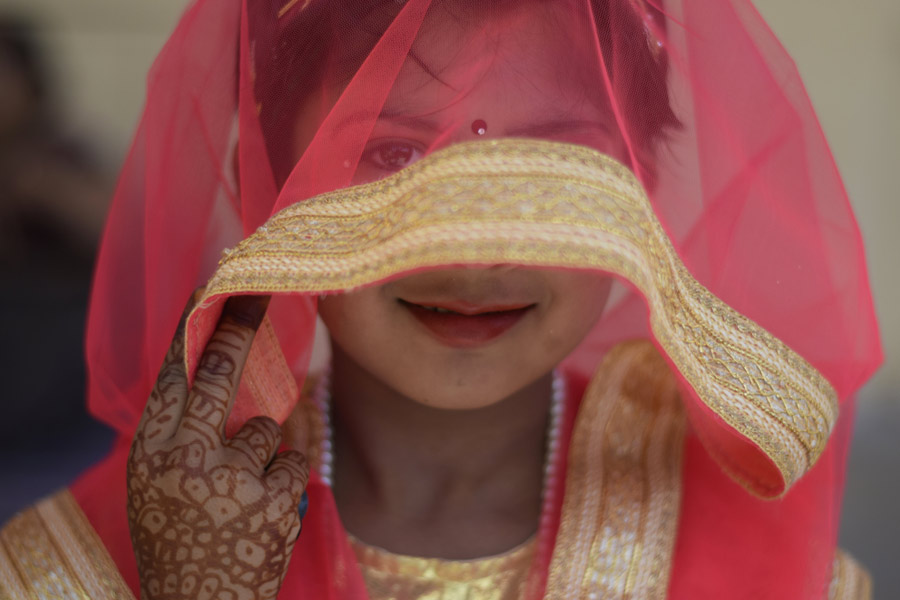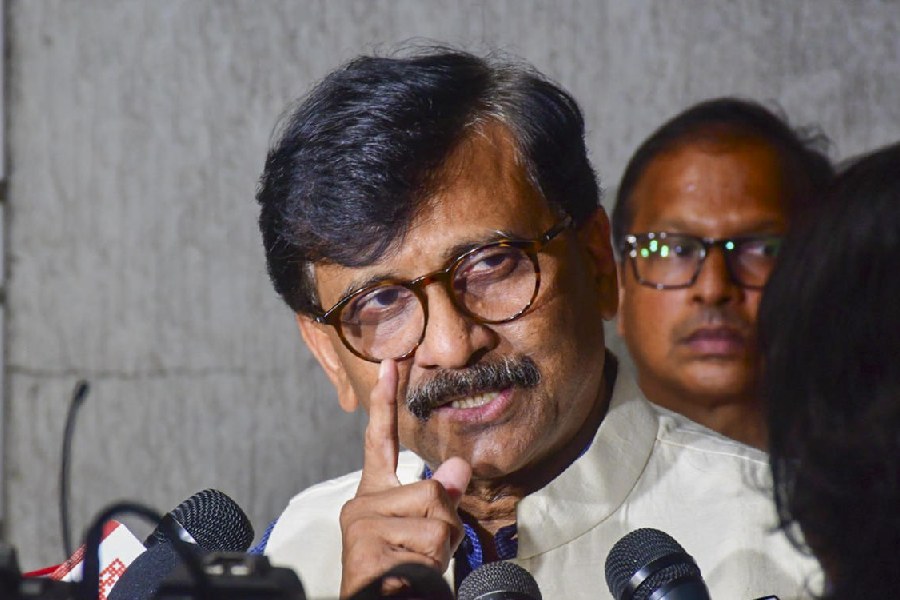A nationwide district-level study has revealed that child marriages are geographically clustered in eastern and central India with Murshidabad, East Midnapore and West Midnapore showing the highest prevalence rates of early marriage among districts in Bengal.
The study relying on 2019-21 data has flagged the three Bengal districts and Samastipur and Lakhisarai in Bihar as the top five districts with the highest prevalence of early marriage. Out of every 100 women, 62 to 66 were married before they turned 18.
Researchers at the International Institute for Population Sciences (IIPS), Mumbai, have identified districts in the country that lag in education or other factors which influence early marriage prevalence rates. “The very high prevalence rates in some districts may be obscured when we consider either state-level or national-level data,” said Jagriti Gupta, a researcher at the IIPS who led the study published in BMC Public Health.
The nationwide prevalence of child marriages dropped from 47 per cent in 2005-06 to 23 per cent in 2019-21, according to data collected through the National Family Health Survey (NFHS) 2019-21.
Gupta and her colleagues used the NFHS 2019-21 data covering over 171,000 women aged between 20 and 29 years to identify 86 districts where the child marriage prevalence rates range between 49 per cent and 66 per cent.
The 65.1 per cent prevalence rate in Murshidabad is 2.8 times higher than the national average. The analysis has shown that Bihar accounts for nine of the 13 districts with prevalence rates higher than 60 per cent. Bengal accounts for three such districts and Odisha one.
The study, which covered 707 districts, has identified 177 districts with prevalence rates between 37 per cent and 48.9 per cent, 218 with prevalence rates between 25 per cent to 36.9 per cent and 173 districts with prevalence rates between 13 and 24.9 per cent. “We’re hoping this study will enable administrators and policymakers to prioritise specific districts for targeted interventions aimed at curbing early marriage,” Gupta said.
The Supreme Court, during a hearing on child marriages last week, recommended several steps including the establishment of special child marriage prohibition units. “Our findings could help administrators prioritise districts for such initiatives,” said Mayank Singh, a co-author at the KLE Academy of Higher Education in Bengaluru. The third co-author of the study is Chander Shekhar, a faculty member at the IIPS.
Social science researchers have long attributed multiple factors contributing to child marriages. “Women are undervalued, lack authority over resources, have little influence over decisions about their personal lives as well as those made at home and community,” Gupta and her co-authors wrote in their paper. Under such cultural influences, women are often compelled to marry early.
The district-level study has identified poor education levels and lack of adequate access to mass media among other factors that the researchers say appear to be associated with early marriage.
Afghan drug racket
The Enforcement Directorate has arrested six persons in connection with a money-laundering investigation linked to an alleged drug trafficking racket running from Afghanistan to India.
The ED on Tuesday said that the accused, Lovejit Singh alias Labba and Manjeet Singh alias Manna, were taken into custody under the Prevention of Money Laundering Act (PMLA) on October 11. While Prabhjit Singh, Gurjot Singh and Ramandeep Singh were arrested on October 18, Gurpreet Singh was held on October 20, the agency said.
Sources said the case stems from a complaint of the Directorate of Revenue Intelligence and the special cell of the Delhi police that seized 293.81kg heroin from the Nhava Sheva Port, Mumbai, in containers imported by Sandhu Exports and 352.71kg heroin from two vehicles and a flat in Haryana’s Faridabad recently.
Additional reporting by
Imran Ahmed Siddiqui










